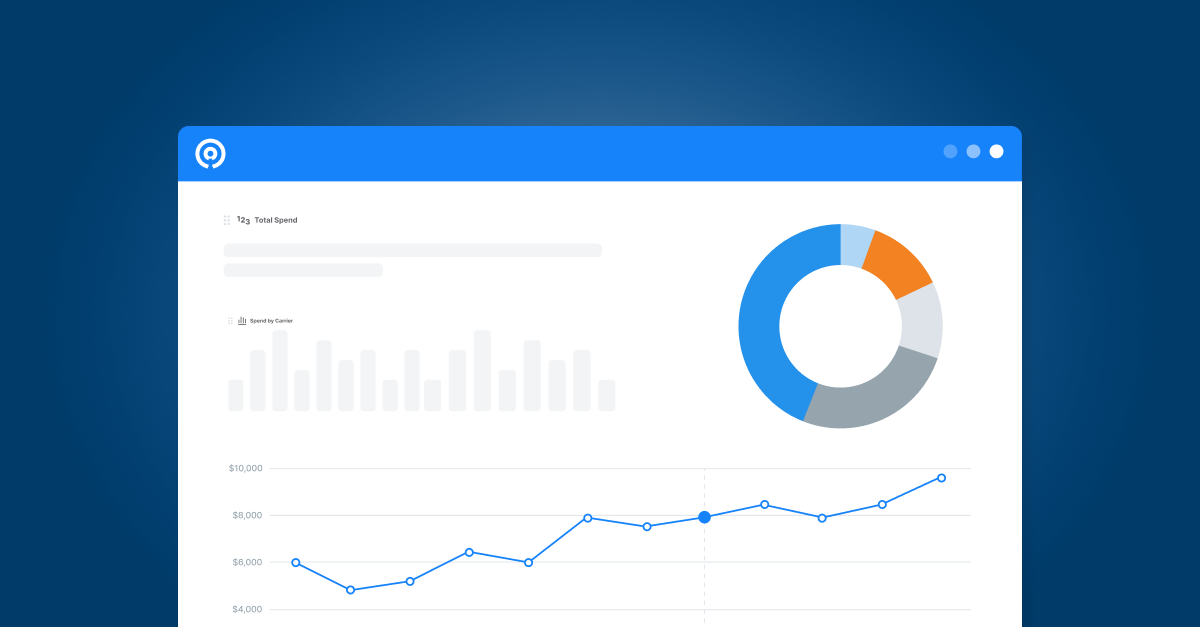Supply Chain Trends 2024: The Top 5 Trends Shaping Q4

2024 is throwing us one curveball after another. From dock strikes to missile strikes, Mother Nature's fury to AI's rise, the logistics world is in for a wild ride. But hey, that's where the opportunities lie, right?
Let's cut through the noise and get to the good stuff. We're talking about game-changing tech, shifting global dynamics, and strategies that could make or break your operations. Whether you're a seasoned vet or fresh to the field, these supply chain trends of 2024 are reshaping the rules. So grab a coffee (you'll need it), and let's get into it.
Trend 1: Increased Supply Chain Disruptions
Supply chains in Q4 of 2024 face a perfect storm of challenges that would make even the most seasoned logistics pros nervous. Sure, we’ve exhaled a sigh of relief after 45,000 dockworkers on the East Coast and Gulf Coast agreed to suspend their strike, but no one will be breathing easier until/unless both sides reach a long-term deal by the Jan. 15, 2025, deadline. Throw in Hurricane Helene's rampage through critical infrastructure (extreme weather events are the top risk facing supply chains in 2024, with a risk score of 100%) and a wave of cyberattacks on logistics systems, and you've got a supply chain crisis for the ages.
Meanwhile, the Middle East continues escalating as a geopolitical pressure cooker. Israel is dealing with threats from all sides — Hamas in Gaza, Hezbollah in Lebanon, and the Houthis in Yemen. When Iran launched over 180 ballistic missiles at Israel, it only strengthened the shockwaves ripping through global shipping routes. Major companies continue to play an expensive game of "dodge the conflict zone" in the Red Sea, and signs show that it could get even worse with the Houthis and Russia negotiating a deal for advanced anti-ship missiles. Not to mention, there’s still a war in Ukraine, and the South China Sea continues to have tensions.
The name of the game to survive this? Flexibility, foresight, and a whole lot of Plan B’s.
Trend 2: Advances in Generative AI and IoT
The supply chain landscape in 2024 looks radically different from just a few years ago. Businesses are embracing new technologies to solve longstanding challenges, and the results are impressive.
Take a moment to consider your own supply chain challenges. Perhaps you've wrestled with inaccurate demand forecasts or struggled to maintain visibility across your network. These common pain points are exactly what emerging technologies like AI and IoT are addressing head-on. According to Gartner, the shift is substantial — about half of supply chain leaders plan to implement AI within the year. Why? Because early adopters see real, measurable benefits. They're cutting logistics costs by 15%, reducing inventory levels by 35%, and boosting service quality by a whopping 65%.
The IoT revolution is equally compelling, with projected investments in logistics reaching $114.7 billion by 2032. This surge reflects a growing recognition that real-time data and connectivity are becoming indispensable for competitive advantage. Talk about one of the largest 2024 supply chain trends redefining commerce.
Trend 3: Sustainability and Reshoring
Sustainability is also becoming the backbone of smart business strategies in 2024. One way businesses are tapping into this is by reshoring- or bringing manufacturing back home. Such practices can slash carbon footprints and build more resilient supply chains. We’re seeing industries with significant cross-border investments, like automotive and semiconductors, especially adopting these practices.
Let's talk numbers. The automotive sector is going all-in, with a whopping $400 billion pledged for reshoring initiatives. That's creating 210,000 new jobs and adding 250 million square feet of manufacturing space in the next decade.
Not to be outdone, semiconductor companies pour nearly $1 trillion into new production capacity on home soil. TSMC's $12 billion Arizona factory is just the tip of the iceberg, bringing 1,600 tech jobs with it. And let's not forget — the government's in on it too. The CHIPS Act and Inflation Reduction Act are serving up some juicy incentives to make the move easier.
Trend 4: Dynamic Freight and Shipping Rates
Shipping rates and capacities will continue to shift like never before in Q4 2024, thanks to fresh capacity entering the market and some serious disruptions.
First, ocean freight is a real rollercoaster. Rates are bouncing around like a pinball as trade lanes shuffle their deck chairs and seasonal demands kick in. On September 18, rates on the Shanghai-New York route took a nosedive, falling 21% to $6,661 per 40-foot container (FEU). And that's not all — Drewry's World Container Index saw its Shanghai-Rotterdam leg shed nearly a grand per 40ft in a week. At the same time, Xeneta's XSI Asia-Europe price took a 10% haircut, landing at $6,843 per 40ft.
Now, throw in that looming threat of the East Coast port strike, and you've got a real monkey wrench in the works. Typhoon Bebinca wreaked havoc in Asian ports like Shanghai and Ningbo, and of course, it didn’t help either. Meanwhile, if you're playing in the air freight sandbox, hold onto your hat — China to North America prices just shot up 9% to $5.91 per kg.
All in all, stay on your toes. Keep an eye on holidays and trends around the world. For instance, carriers are scrambling to fill capacity with China's Golden Week, which might mean some sweet short-term rate drops. But don't get too comfy — post-holiday, rates could jump as demand bounces back. Stay flexible, watch those rates like a hawk, and be ready to pivot your strategy immediately.
Trend 5: Increasing Role of Big Data and AI in Risk Management
Finally, Big Data and AI are transforming supply chains heading into the final quarter of 2024, and it's not just hype. Companies use these tools to get ahead of risks, streamline operations, and stay compliant in an increasingly complex regulatory landscape.
Businesses are now using predictive analytics to forecast demand, accurately manage inventory, and stay agile in a market that doesn't cut anyone slack. And while 56% of firms already use AI to elevate customer service, there's a serious side, too. With the EU's AI Act coming into play, companies need to be smart about compliance or face stiff penalties. It's a balancing act, but those who get it right are setting themselves apart. The ultimate goal is to build a supply chain that's not just lean but intelligent and responsive.
Making Sense of Supply Chain Chaos: What's Next in 2024?
Keeping up with supply chain trends can feel like a full-time job on top of your actual full-time job. And as we near the end of 2024, things aren’t getting any easier. But here's the thing — when you get on top of these shifts and supply chain trains, the benefits go beyond just staying current. You’re finding practical ways to give your business an edge by thinking forward well beyond 2024 supply chain trends.
Consider how tools like freight audits and parcel invoice audits can impact your bottom line. At Intelligent Audit, we've watched companies of all sizes use these insights and solutions to slash costs and streamline operations. It's not about having the biggest budget or the flashiest tech — it's about making smarter, data-driven decisions that actually move the needle. Looking ahead, the winners in this space will be those who can quickly adapt and put their data to work.
Feeling swamped by it all? That's normal. But remember, you've got allies in this fight. We're here to help you make sense of the noise and turn these supply chain trends in 2024 into real business gains. Get started with Intelligent Audit today to see how.



